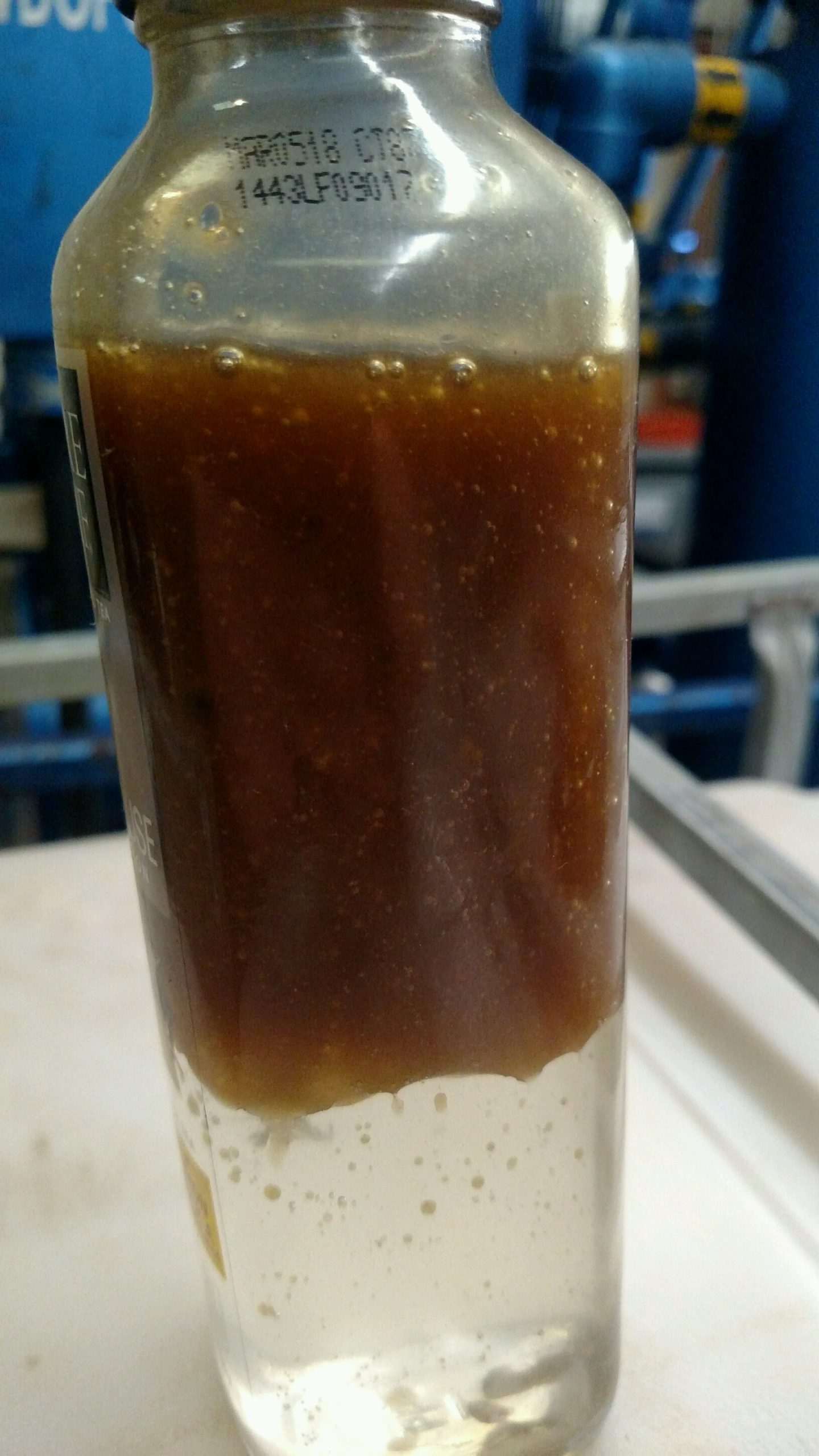
A ship company based in New Jersey contacted us. They provide restoration dredging services, i.e. deepening ports for large ship access, maintaining such water channels, as well as creating barrier islands and land reclamations.
They were in the middle of performing maintenance on a gearbox located on a shipping vessel specifically used for channel dredging, and after they inspected the 1,100 gallons of gear oil (ISO 320W) they had found that the gearbox was highly-contaminated with solids and moisture.

After finding PFP, my contact at the company organized to send to us the contaminated oil in IBC totes so that we could filter it until reaching an acceptable target oil cleanliness level. This was a challenge for several reasons. First, the outside temperature outside was less than 50°F which turns 320-weight gear oil into the consistence of honey! For this reason, and to address the moisture contamination issue, we had to use a vacuum dehydrator with an on-board heater in order to heat the oil and thus 1. reduce the boiling point of the emulsified water 2. reduce the viscosity of the oil. This minimized the differential pressure going through the filter elements, which allowed the filters to last longer and maximize dirt load.

In order to properly clean up the gear oil, we ended up having to first install a bag filter vessel in-line with the flow of the oil to the vacuum dehydrator, in order to use the dehydrator’s heater to warm up the gearbox oil as it was circulating. This was done initially without even touching the dehydrator’s filters because the particulate contamination level was so excessive that high-efficiency microglass filter cartridges would have been blinded off immediately. In order to avoid that, the bag filter vessel was incorporated as a “pre-filter” to the dehydrator. The vacuum pump on the dehydrator pulled the oil from the tote by producing vacuum through the bags and then suctioning it into the dehydrator. The oil then traveled through the discharge hose and back into the tote. Optimal temperature of the heated oil would have been around 150°F to 160°F, but we were unable to get it so high because the maximum temperature of the IBC totes was 140°F. Either way, with this setup, the bag filters removed a significant amount of the larger particles and protected our more expensive equipment as well.

The gear oil in all four IBC totes had similar contamination levels, so I’ll just talk about the procedure and findings related to one of the totes (Tote A, to be precise). Once we circulated the oil several times and got it close to optimal temperature (140°F)we installed in the vacuum dehydrator housing a 12µ absolute-rated microglass filter cartridge, after which the baseline ISO 4406 cleanliness code was recorded. Even after multiple passes through the 1µ (nominal) bag filters and a single pass through the 12µ microglass filter the ISO 4406 code in Tote A was registered at 24/21/16 (click to view PDF of results). The worst of the four totes was registered at 25/25/22.

After we hit the terminal differential pressure in the initial filter setup we replaced the 12µ microglass filter with a 6µ filter. We followed this step-down strategy with a 3µ filter and finally with a 1µ filter, and ultimately we achieved our ISO cleanliness goal of 18/16/13 (results, PDF). And with regards to the water contamination, as the oil was circulating through the particulate filters the vacuum dehydrator performed its dehydration job well, removing a percentage of the moisture contamination with each pass, until we reached our target goal of <500 PPM.
We then used a laser particle counter in order to document the exact particulate contamination levels per the ISO 4406 cleanliness standard. We used a DOBLE moisture sensor to document the water contamination level in PPM. In the end, each tote required approximately 8 hours of filtration and on average a quantity of four to five pleated microglass filter cartridges (36″ long x 6″ OD) in the vacuum dehydrator.
Ultimately we were successful in filtering the 1,100 gallons of 320W gear oil; we achieved the company’s target oil cleanliness levels required to ensure the continued operation and reliability of the ship’s gear gox.
Do you have a question about oil purification or vacuum oil dehydration systems? Feel free to contact us anytime. Our friendly team of experts will be happy to help you out with your particular issue.
Until next time!
 Todd at Precision Filtration Products
Todd at Precision Filtration Products
P.S. Have you seen us in our latest VIDEOS? If not, click here to check us out now!




